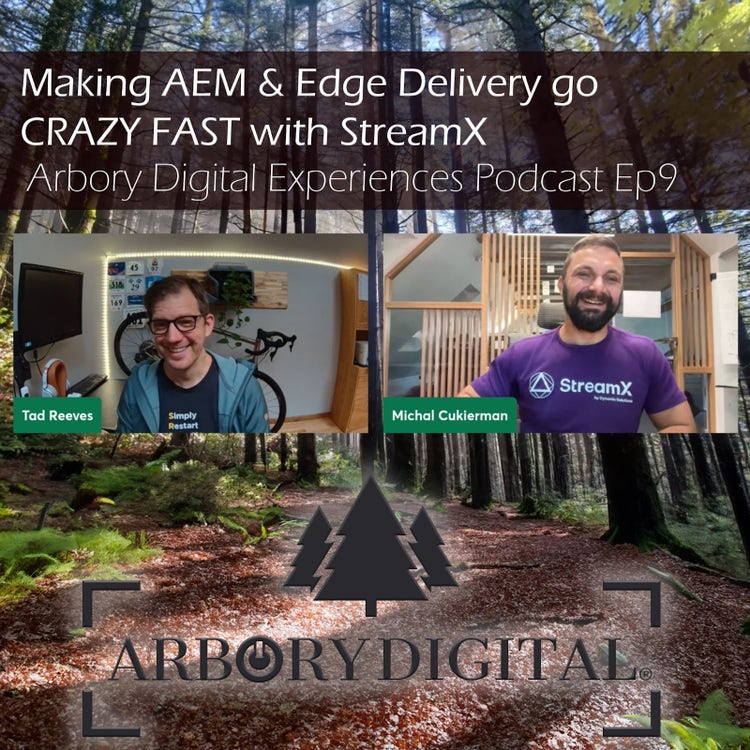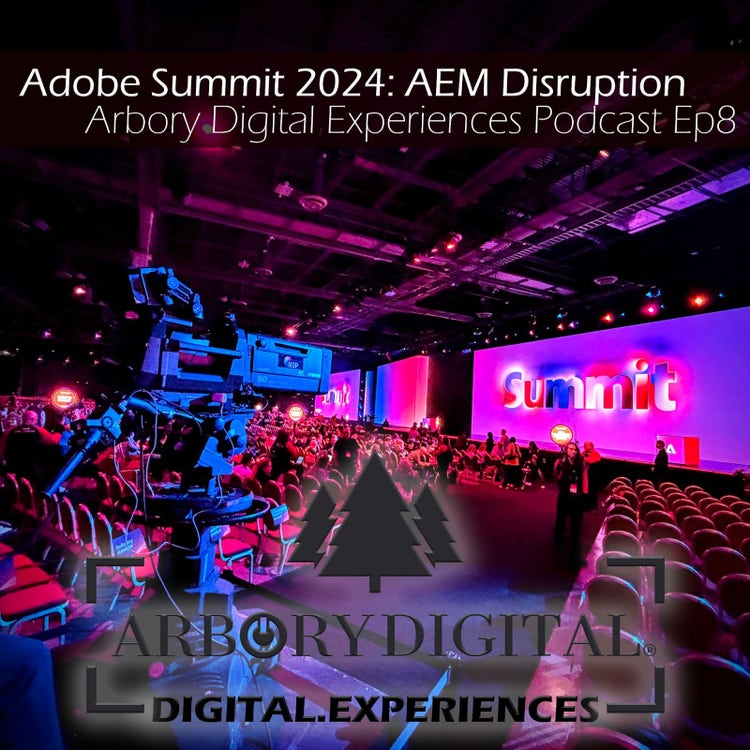
AEM 6.5 LTS vs Edge Delivery vs AEM as a Cloud Service: AEM Columbus User Group Meetup

In a recent meetup of the AEM Columbus User Group, Tad Reeves from Arbory Digital led a discussion on the current offerings of Adobe Experience Manager (AEM). In case you missed it, the key points from the meetup focused on the differences between AEM 6.5 LTS, Edge Delivery, and AEM as a Cloud Service, along with their respective advantages and challenges.
Also available on Apple Podcasts and as an audio or video podcast on Spotify.
Overview of AEM Offerings
Adobe Experience Manager now encompasses three distinct offerings, often confused due to overlapping names and shared functionality:
- AEM 6.5 LTS (Long-Term Support)
- AEM as a Cloud Service (AEMaaCS)
- Edge Delivery Services
Each serves different use cases and has its own technical profile, support roadmap, and licensing structure.
AEM 6.5 LTS
AEM 6.5 LTS is the self-hosted version of AEM, closely resembling the original architecture. It allows for various deployment options, including self-hosting or Adobe-managed hosting. Key points include:
- Customization: Highly customizable and has been receiving continuous service packs since its release in 2019.
- Long-Term Support: Adobe has committed to supporting AEM 6.5 LTS for the foreseeable future, addressing concerns about its potential end-of-life status.
- Technical Specifications: Runs on JDK 17, ensuring compatibility with future updates.
AEM as a Cloud Service
Launched in 2020, AEM as a Cloud Service is designed to leverage cloud capabilities. It shares many features with AEM 6.5 but includes:
- Built-in CDN: Offers a content delivery network that enhances performance.
- Scalability: Designed to auto-scale, although there are limits to its performance capabilities.
- Subscription Model: Operates on a subscription basis, with no perpetual licensing options available.

https://experienceleague.adobe.com/docs/experience-manager-cloud-service/content/overview/architecture
Edge Delivery Services
Edge Delivery Services, previously known as Project Helix, is a separate offering that focuses on document-based content management. Key features include:
- Simplicity: Designed to be simpler and faster to develop on compared to traditional AEM.
- Integration: Can be integrated with AEM Cloud Service, allowing for a hybrid approach.
- Unique Architecture: Operates independently from AEM, which means different skills and techniques are required for customization.

Advantages and Challenges
AEM 6.5 LTS
Advantages:
- Flexibility and customization capabilities.
- Long-term support ensures stability for entrenched customers.
Challenges:
- Requires a significant investment in skilled personnel.
- Performance optimization can be complex and resource-intensive.
AEM as a Cloud Service
Advantages:
- Autoscaling capabilities can handle varying traffic loads.
- Simplifies CI/CD pipeline management.
Challenges:
- Migration from AEM 6.5 to Cloud Service can be complex and time-consuming.
- Performance may not always meet expectations, requiring ongoing monitoring and optimization.
Edge Delivery Services
Advantages:
- Fast development cycles and reduced labor costs.
- Easy integration with existing AEM services for enhanced functionality.
Challenges:
- Limited templating and component policies can hinder strict content governance.
- Still maturing in terms of features and documentation, which can lead to implementation challenges.
Licensing Considerations
Licensing models vary significantly across the three offerings:
- AEM 6.5 LTS: Offers both perpetual and subscription-based licenses.
- AEM as a Cloud Service and Edge Delivery: Operate on a consumption-based licensing model, which can be a shift for organizations used to traditional licensing.
Migration and Implementation Strategies
During the meetup, attendees discussed various scenarios for migrating to these platforms:
- Organizations currently using AEM 6.5 LTS should evaluate their specific needs and consider the long-term implications of moving to Cloud Service or Edge Delivery.
- For new implementations, Edge Delivery may offer a faster and more cost-effective solution, especially for content-heavy sites.
Conclusion
The AEM Columbus User Group meetup provided valuable insights into the current state of Adobe Experience Manager offerings. Understanding the differences between AEM 6.5 LTS, AEM as a Cloud Service, and Edge Delivery Services is crucial for organizations looking to optimize their content management strategies. As Adobe continues to evolve its products, staying informed about these changes will help users make better decisions for their digital experiences.
Please give our podcast a listen, and reach out if you’d like to discuss how new infrastructure models like this might work for your environment! Please reach out!
Podcast Speakers

Tad Reeves
Principal Architect at Arbory Digital
Tad has been working with Adobe products since 2010 and has extensive experience in website infrastructure. Starting in 1996, he has worn nearly every hat in website delivery from solution architecture to product management, and has over two decades of experience. He loves that Arbory gives him the opportunity to provide honest and effective solutions, even if it means challenging prevailing sales perspectives. When Tad isn’t working, he enjoys mountain biking and exploring nature with his wife & 3 kids.
Like what you heard? Have questions about what’s right for you? We’d love to talk! Contact Us
More Podcast Episodes You Might Like
The adaptTo() 2024 Conference has just concluded, with an absolutely PACKED 3 days of highly-technical, AEM-centric sessions and discussions. In 3 weeks or so, the recordings of these sessions will be available, but in the meantime we got together with Marta & Michał Cukierman from StreamX to discuss our favorite sessions and what they mean for the AEM community.
How do you solve the constant problem of cache freshness and backend system latency in any modern CMS (especially AEM or Edge Delivery?) In this episode we talk to Michał Cukierman, CTO of Dynamic Solutions and co-founder of StreamX - a digital experience mesh for dramatically and reliably accelerating complicated dynamic content requests from the many constituent systems that make up a modern CMS deployment.
It’s not hyperbole that if you haven’t put considerable effort into rethinking your full site delivery stack in the last few months, you are going to want to. So please - stop reading this right now, pop in some headphones and take this podcast for a walk and consider how it might affect your environment!


